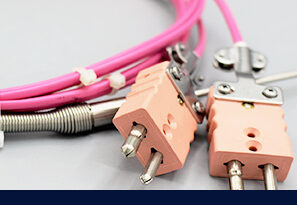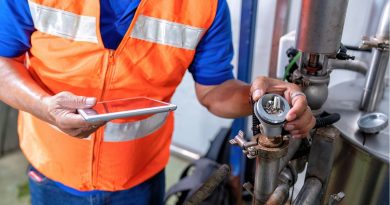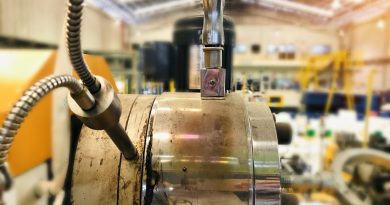Understanding B Type Thermocouple: Features and Applications
What is a B type thermocouple? A B type thermocouple, also known as type B thermocouple, is a specialized temperature sensor that plays a critical role in measuring high temperatures across various industries. This article explains the unique properties of B type thermocouples, their features, applications, and how they compare to other types. We also provide essential tips for installation and maintenance to ensure optimal performance.
What is a B Type Thermocouple?
A B type thermocouple is constructed from two different metal wires joined at one end. Typically, it uses Platinum-Rhodium alloys: one wire contains 30% Rhodium and 70% Platinum, while the other contains 6% Rhodium and 94% Platinum. This combination allows B type thermocouples to measure extremely high temperatures, making them suitable for specialized applications.
Design and Construction
The design of a B type thermocouple is crucial for its performance. Here are some key aspects:
- Material Composition: The use of precious metals like Platinum and Rhodium offers excellent oxidation resistance, ensuring durability even at high temperatures.
- Junction Type: The thermoelectric junction can be grounded or ungrounded. Grounded junctions respond quickly to temperature changes, while ungrounded junctions provide better insulation from the environment.
Working Principle
B type thermocouples operate based on the Seebeck effect, which generates a voltage when there is a temperature difference between the junction and the wire ends. A connected measuring instrument, like a digital thermometer, converts this voltage into a temperature reading.
Key Features of Type B Thermocouple
Type B thermocouple offers several distinctive features that make them ideal for high-temperature applications. Understanding these features helps in selecting the right thermocouple for specific needs.
High-Temperature Range
B type thermocouples excel in their high-temperature range, measuring from 0°C to 1800°C (32°F to 3272°F). This capability suits industries that require precise temperature control in extreme conditions, such as:
- Metallurgy
- Glass production
- Ceramics
Exceptional Stability and Accuracy
B type thermocouples maintain stability and accuracy at elevated temperatures. This reliability is crucial in processes demanding consistent temperature readings for product quality and safety.
Chemical Resistance
The materials used in B type thermocouples withstand oxidation and other corrosive environments. This feature benefits chemical processing, where thermocouples encounter aggressive substances.
Wide Availability
B type thermocouples come in various forms, including flexible and rigid types, making them adaptable to different installation scenarios. This versatility allows engineers to choose the most suitable design for their applications.
Applications of Thermocouple Type B
Thermocouple type B finds applications across various industries due to their unique features. Here are some notable uses:
Metallurgical Processes
In metallurgy, accurate temperature measurement is vital for processes like smelting, forging, and heat treatment. The B type thermocouple’s high-temperature range is ideal for monitoring temperatures in furnaces and kilns.
Ceramics and Glass Manufacturing
The ceramics and glass industries utilize B type thermocouples to control temperatures during production. Their ability to withstand extreme heat ensures quality and prevents defects in final products.
Aerospace Applications
In aerospace, precise temperature measurement is critical for engines and other components. The B type thermocouple’s reliability under extreme conditions makes it suitable for applications like engine testing and heat shield monitoring.
Laboratory Research
Researchers often employ B type thermocouples for experiments in high-temperature environments. Their accuracy and stability make them essential tools in scientific investigations.
Petrochemical Industry
The petrochemical industry uses B type thermocouples in processes like refining and chemical production, where high temperatures and corrosive substances are common. Their durability ensures long-term performance in demanding environments.
Comparing B Type Thermocouples with Other Types
When choosing a thermocouple, understanding how the B type thermocouple compares with other types, such as K, J, and T thermocouples, is crucial.
Advantages of B Type Thermocouples
- High-Temperature Capability: B type thermocouples can measure temperatures up to 1800°C, making them suitable for extreme environments.
- Accuracy and Stability: They provide reliable readings over a wide temperature range, ensuring precision in critical applications.
- Chemical Resistance: Their robust construction allows them to withstand harsh chemical environments, reducing the risk of failure.
Disadvantages of B Type Thermocouples
- Cost: B type thermocouples are typically more expensive than other types due to their material composition. This can be a consideration for projects with budget constraints.
- Limited Low-Temperature Performance: They excel in high temperatures but are not ideal for low-temperature applications, where other types (like K or T) perform better.
Comparison Table
| Feature | B Type Thermocouple | K Type Thermocouple | J Type Thermocouple | T Type Thermocouple |
| Temperature Range | 0°C to 1800°C | -200°C to 1260°C | -200°C to 750°C | -200°C to 350°C |
| Accuracy | High | Moderate | Moderate | High |
| Cost | High | Low | Low | Moderate |
| Chemical Resistance | Excellent | Moderate | Good | Good |
| Feature | B Type Thermocouple | K Type Thermocouple | J Type Thermocouple | T Type Thermocouple |
| Temperature Range | 0°C to 1800°C | -200°C to 1260°C | -200°C to 750°C | -200°C to 350°C |
| Accuracy | High | Moderate | Moderate | High |
| Cost | High | Low | Low | Moderate |
| Chemical Resistance | Excellent | Moderate | Good | Good |
| Suitable Industries | Metallurgy, Aerospace | Food Processing | General Industry | HVAC, Low-Temp Applications |
| Installation Complexity | Moderate | Low | Low | Moderate |
| Calibration Frequency | Regular | Periodic | Periodic | Less Frequent |
Installation and Maintenance Tips for B Type Thermocouples
To ensure your B type thermocouple operates effectively and lasts, proper installation and maintenance are crucial. Here are some practical tips:
Installation Guidelines
Correct Placement: Position the thermocouple to accurately measure the desired temperature. Avoid areas with air pockets or turbulence that could skew readings.
Use Proper Insulation: Insulate the thermocouple to prevent heat loss and ensure accurate readings, especially in high-temperature applications.
Secure Connections: Ensure the thermocouple wires are firmly connected to the measuring instrument. Loose connections can lead to inaccurate readings or equipment failure.
Avoid Mechanical Stress: Prevent excessive mechanical stress during installation to avoid damage and performance issues.
Maintenance Practices
Regular Calibration: Periodically calibrate the thermocouple to ensure accurate temperature readings. Calibration involves comparing the thermocouple’s output with a known standard and making necessary adjustments.
Routine Inspections: Regularly check for signs of wear, oxidation, or damage. Replace components that show deterioration to maintain performance.
Cleaning: Keep the thermocouple clean and free from contaminants. Dirt or material buildup can affect accuracy and responsiveness.
Temperature Monitoring: Continuously monitor temperature readings to identify discrepancies that may indicate a malfunction. Early detection can prevent more significant issues later.
FAQs About B Type Thermocouples
What are the main advantages of using a B type thermocouple?
B type thermocouples are known for their high-temperature capability, exceptional accuracy, and stability in extreme conditions, making them ideal for various industrial applications.
Are there specific industries where B type thermocouples are more commonly used?
Yes, they are predominantly used in industries such as metallurgy, ceramics and glass manufacturing, aerospace, laboratory research, and the petrochemical sector.
How do I choose the right thermocouple type for my application?
Consider factors such as the temperature range, required accuracy, chemical exposure, and budget constraints when selecting the appropriate thermocouple type.
B type thermocouples are exceptional tools for high-temperature measurement, offering unique features and advantages that set them apart from other types. Their robust design, accuracy, and wide range of applications make them essential in industries like metallurgy, ceramics, aerospace, and petrochemicals. Understanding their installation and maintenance requirements is crucial for optimizing performance and ensuring longevity. By following the guidelines in this article, users can harness the full potential of B type thermocouples in their operations.
For more information on thermocouples and their applications, consider exploring resources from reputable manufacturers and industry experts. The right knowledge and tools can significantly enhance your temperature measurement processes and improve overall operational efficiency.



